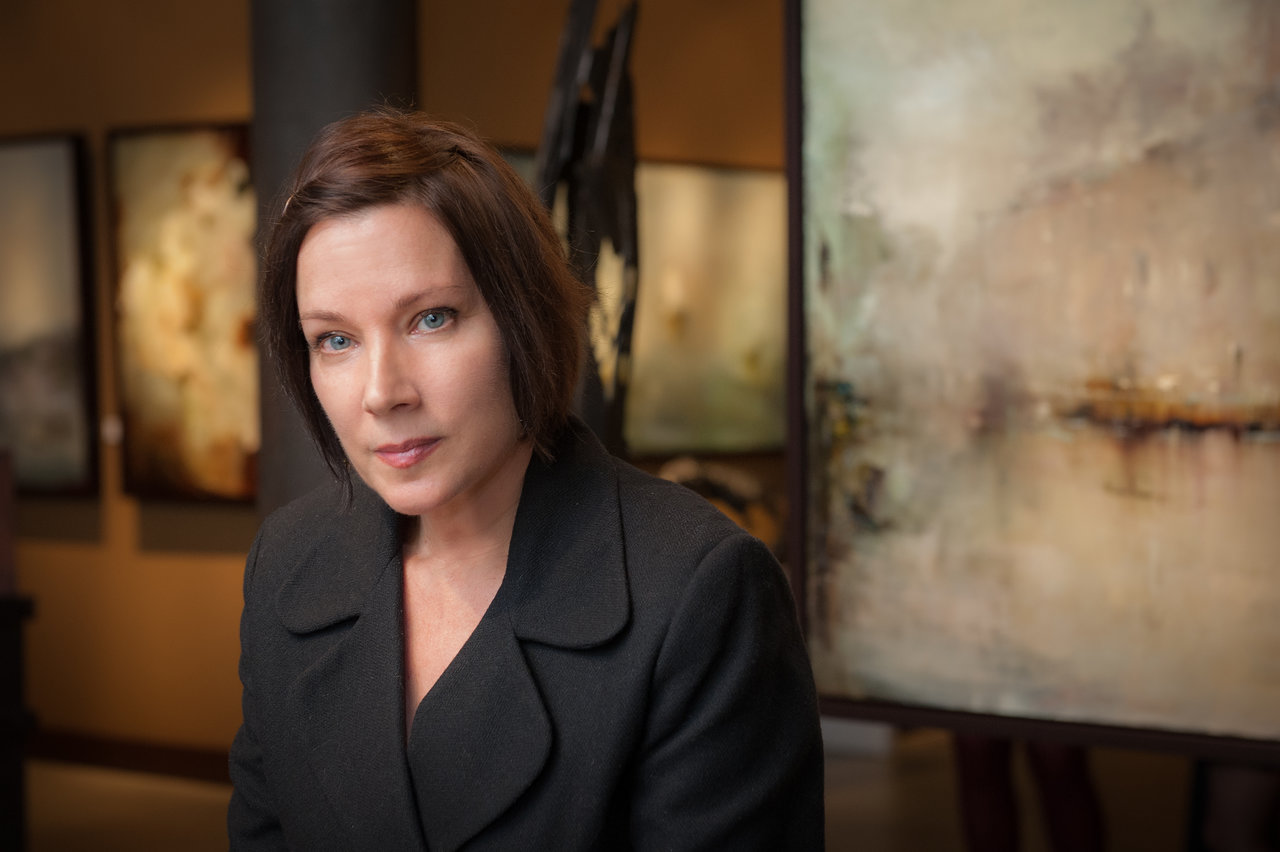 Artist, France Jodoin. Photo courtesy of Thompson Landry Gallery
Artist, France Jodoin. Photo courtesy of Thompson Landry Gallery
For anyone in need of respite from the frenetic, plugged-in, rat race that is contemporary urban life, Time and its Reflection, a solo show of paintings by France Jodoin at Thompson Landry Gallery, may be just what the doctor (or therapist) ordered. The show, consisting primarily of landscapes, seascapes, and still lives in oil on linen or wood panel, is a welcome panegyric to quietude. Jodoin, a resident of Cowansville, Quebec, achieves such an effect utilizing only a palette knife, scraping and smearing her subjects onto the picture plane. The result is a sumptuously textured aesthetic and an image that hovers tenuously between abstraction and figuration. It is work that could not be more appropriate for its current home at Thompson Landry, a luxe Distillery District gallery specializing in historic and contemporary Quebec painting and sculpture. Jodoin’s is classic subject matter done well, inviting comparison with the French Impressionists and Romantics like Caspar David Friedrich and J.M.W. Turner, the latter of whose paintings are, coincidentally, on display at the Art Gallery of Ontario. These artists’ light-suffused landscapes favourably lend their associations to Jodoin’s work, which borrows their evocation of the sublime, awe-inspiring natural scenes, and phenomenological leanings.
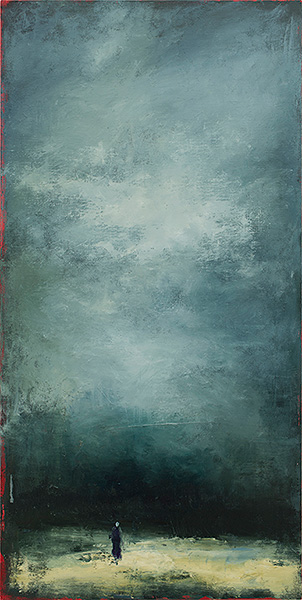 France Jodoin, Le silence est un peu de ciel qui descend vers l’homme, oil on linen, 48″ x 24″. Photo courtesy of Thompson Landry Gallery.
France Jodoin, Le silence est un peu de ciel qui descend vers l’homme, oil on linen, 48″ x 24″. Photo courtesy of Thompson Landry Gallery.
Jodoin welcomes such comparisons. A self-professed classicist, she is drawn to literature and art from the 17th to 19th centuries and uses these as frames of reference for her work. A painting will begin with a composition or colour palette directly inspired by an historic portrait, for example. Or Jodoin will draw a work’s title from an anthology of literature of this era; her references include writers such as Elizabeth Barrett Browning, Emily Dickinson, and Lord Byron. When asked about her fascination with the 19th century in particular, Jodoin responds, “I have an affinity for this era, for the past. It feels very natural to me.” It is a fascination, she concedes, that has much to do with the perceived pace of the past. To her, the past possesses a meditativeness that contrasts with the frenzied pace of life today. Through her work, Jodoin aims to bring the comparative stillness of the past to the present, to create an immersive experience with it. It is a plastic approach to time and an enticingly paradoxical project, as to immerse oneself in an experience would seem to imply a full inhabitation of the present moment. It is an aim she achieves partially through her heavy referencing of historic styles, but also through often quaint historic details: a penny-farthing or bustled skirt, a cityscape devoid of contemporary architecture.
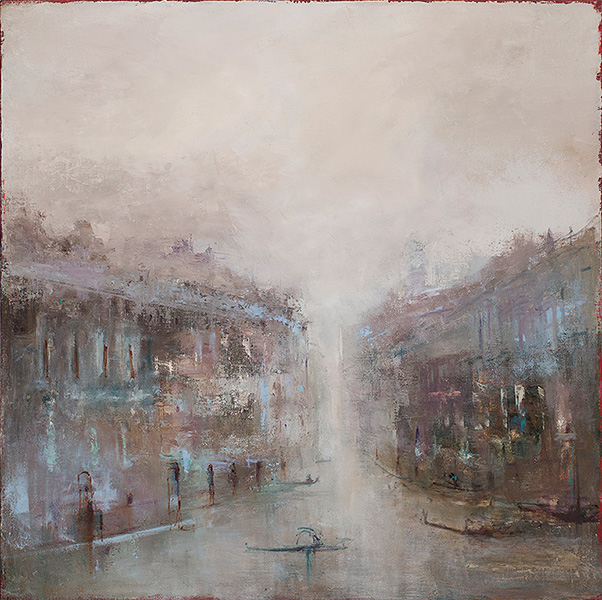 France Jodoin, Barges, like scattered old shoes, zealously trample gothic facades, oil on linen, 30″ x 30″. Photo courtesy of Thompson Landry Gallery
France Jodoin, Barges, like scattered old shoes, zealously trample gothic facades, oil on linen, 30″ x 30″. Photo courtesy of Thompson Landry Gallery
As for the immersive aspect of her work, Jodoin achieves this in ways now associated with her painterly predecessors: tranquil subject matter, a muted palette of soft blues, pinks, greys and yellows, atmospheric light, a sketchy picture plane, and an often grand use of scale. Indeed, like the work of the Impressionists, light seems to emit from within the built up layers of paint on Jodoin’s surface, and draws the viewer like a candle’s flame. Similarly, her unsettled surface—tangled paint scraped, rather than brushed, onto its ground—forces the gaze to float unmoored, in search of a hard edge, horizon line, or detail where often there is only a vague dissolving suggestion. These hints at figuration—the feathery masts of “So Fine was the Morning Except for a Streak of Wind Here and There”, for example—remind us how keenly our minds grasp onto the real, how expertly we construct narrative where it is just barely present, how quickly we recognize and fill in gaps. It is with these barely representative works that Jodoin truly excels. As viewers, we easily lose ourselves until our narrative task is complete. In many cases, the use of large scale heightens this immersive experience—light and surface come to occupy one’s entire field of vision. The works are, ultimately, elegant and engrossing. Jodoin achieves her objective of stillness and the eye cannot look away.
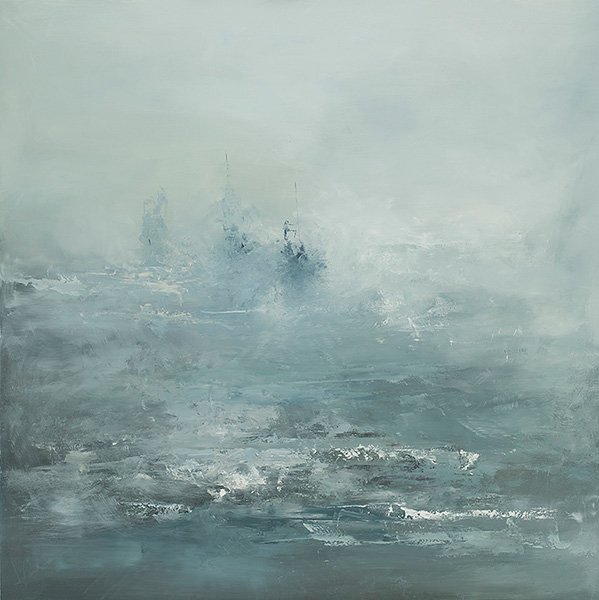 France Jodoin, So Fine was the Morning Except for a Streak of Wind Here and There, oil on wood panel, 48″ x 48″. Photo courtesy of Thompson Landry Gallery
France Jodoin, So Fine was the Morning Except for a Streak of Wind Here and There, oil on wood panel, 48″ x 48″. Photo courtesy of Thompson Landry Gallery
This is not to say, however, that the work is without its darker moods. Calmness, Jodoin reminds us, is not necessarily benign. Amidst serene images of blue-grey waters hang works with slightly more sinister undertones. For a still life with flowers—”My Heart is Like a Singing Bird”, for instance—Jodoin may choose a conspicuously blood-like red. Or, an otherwise placid water scene—”My Dwelling is the Shadow of the Night”, for example—will rest uneasily over its dark under-painting, layers of disquieting red or black peaking out from under calm blue. In cases such as these, slashes of knife-smeared paint seem not only sumptuous, but also eerily foreboding. Meanwhile, such works expose the significance of layers to Jodoin’s overall project. Each painting, she describes, is a result of accumulation over time; it is a process of intuition, in which layers settle one on top of another until the work is complete. The final result is often at a distant remove from its beginnings and may incorporate many moods. As Jodoin explains, “we are a palette. I don’t want to privilege parts at the expense of the whole.”
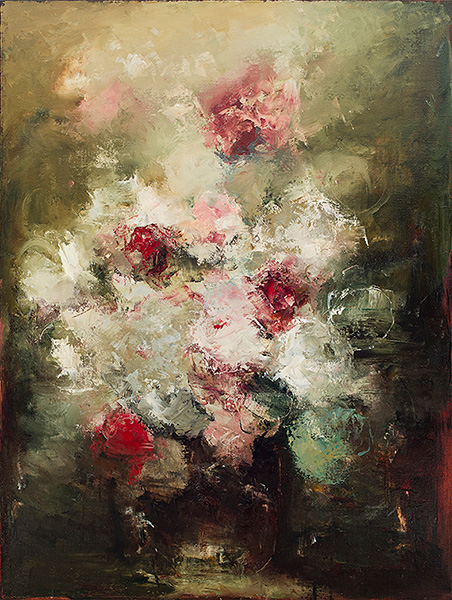 France Jodoin, My Heart is Like a Singing Bird, oil on linen, 48″ x 36″. Photo courtesy of Thompson Landry Gallery
France Jodoin, My Heart is Like a Singing Bird, oil on linen, 48″ x 36″. Photo courtesy of Thompson Landry Gallery
In this regard, seascapes—what she calls “the other landscape”—may be her ideal subject. The sea, she observes, contains “as many if not more moods than the land. It changes constantly; it is infinite. No wave is the same as any other.” This many-sided understanding of water extends from Jodoin’s personal experience: she admits to needing water—not only physiologically, but also artistically—and yet also admits to being afraid of it. The complexity of this relationship mirrors many of our encounters with the natural world and may explain why Jodoin’s seascapes are, in my opinion, her strongest works in the exhibition. Yet, even as a whole, Time and its Reflection showcases a body of work that is beautiful, affecting, and skillfully rendered. Though its muted palette, luxuriant textures, traditional subject matter, and luxe location means it will likely be seen primarily in tasteful Rosedale mansions once the show has concluded, for now it is open and available as a reprieve for all of us harassed city dwellers. And in this, Jodoin has succeeded in her aims. Stop on in and have a look.
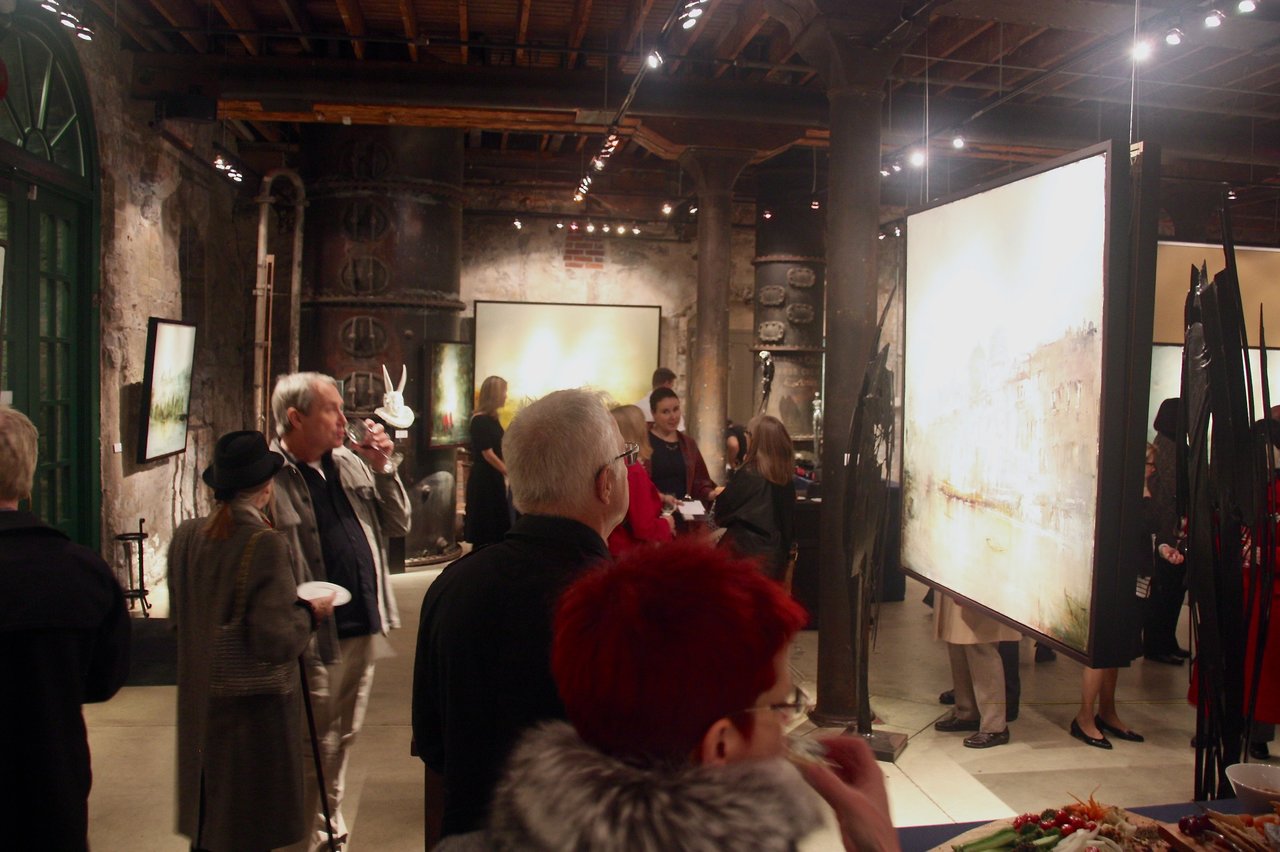 Guests at the Opening Reception
Guests at the Opening Reception
Catherine MacArthur Falls
*Exhibition information: November 12 – December 6, 2015; Thompson Landry Gallery Stone Distillery, 32 Distillery Lane, Toronto. Gallery hours: Tue – Sat, 11 am – 6 pm; Sun, 12 – 5 pm.
